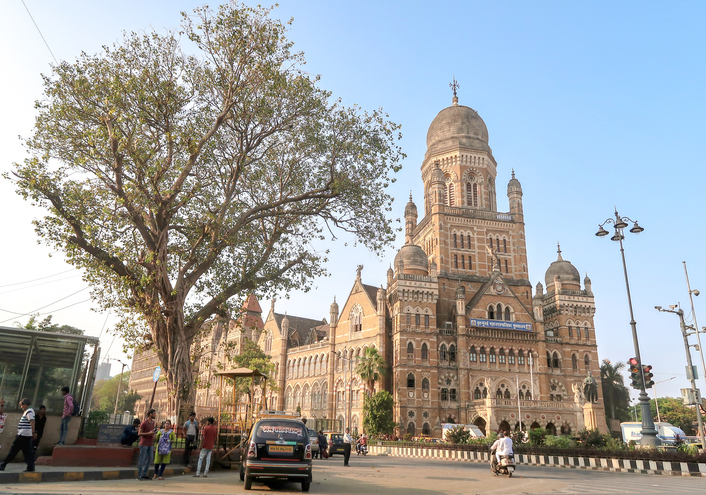
Key Takeaways from a focus group discussion
COVID-19 | Local Governance | Vaccination
With the human impact of the pandemic being felt most significantly at the individual and community levels, the pandemic served as a reminder of why so many public health and law and order functions are vested in state and local governments. It also highlighted the flaws in existing structures, which place the burden of the management of public health emergencies (“PHE”s) at lower levels of government without providing adequate resources. In the context of Covid-19, the vast array of existing duties of district administrators was further expanded by placing them on the frontline of the district and local PHE response. Meanwhile, local governments also inevitably found themselves charged with additional responsibilities and unexpected governance challenges. A few months into the pandemic, significant public health efforts were focused on a nationwide vaccination programme. The success of the vaccination campaign, among other governance measures, required district and local governments to work hand-in-hand for effective local implementation. However, the pandemic added layers of complexity to administrative approaches, public perceptions, and existing social issues such as gender, in the context of public health. The public, especially women, found themselves dealing with a wide range of systemic and pandemic-specific issues in the face of a black-swan event. Running through this were pressing doubts about the effects, efficacy, and logistical hurdles of Covid-19 vaccines and vaccination programs.
In this context, the Vidhi Centre for Legal Policy (“Vidhi”), as part of its ‘Lest We Forget’ series, published two studies titled ‘Learnings from District Administrations’ and ‘COVID-19 Vaccine Hesitancy Among Women in Delhi’ analysing key governance initiatives undertaken during the Covid-19 pandemic with a special focus on the functioning of district administrations and the prevalence of vaccine hesitancy in women.
Vidhi organised a focus-group discussion on 17 June 2023 with experts working in diverse roles in the area of health, on some of the themes explored in the two reports. Through this discussion, Vidhi sought to sharpen its findings and gain insights from these experts on the challenges faced in pandemic management at the district frontlines as well as those faced by women in the uptake of vaccines. Takeaways from the discussion are intended to ultimately inform further work on recommending legal and policy changes in these areas.
The following discussants shared their inputs as part of this session:
- Roli Singh, Additional Secretary & Mission Director, National Health Mission in the Ministry of Health & Family Welfare;
- Dr Jacob Puliyel, Paediatrician and expert on Public Health and Immunology;
- Dr Raj Shankar Ghosh, Consultant, One Health, Disease Surveillance and Immunization; and
- Amita Pitre, Care Project Advisor, Strategy and Feminist Futures department, Oxfam International.
The discussion was chaired by Dr Dhvani Mehta (Co-founder, Vidhi and Lead, Health). It was steered by Vidhi fellows Kim D’Souza, Shreyashi Ray, Pragya Singh, and Lakshita Handa, and Sunetra Ravindran (Lead, Legal Design and Regulation).
The themes of discussion and key takeaways have been summarised below:
Key Takeaways | Session I: In light of the findings from the report discussed in the first session pertaining to the Vidhi report on Learnings from District Administrations, the following themes were discussed with the participants:
- Role of the law and district-level plans in pandemic management experience at local levels
- The Disaster Management Act, 2005 (“DMA”) was utilised because of the structure, hierarchies, and powers established by it. In the absence of clear or detailed laws/ guidance on PHE management, it provided a familiar framework enabling administrators at various levels to take action and utilise resources towards the emergency. The Ministry of Home Affairs was also empowered to direct inter-ministerial coordination to cater towards diverse aspects of pandemic management including health, relief efforts, control of movement, etc. District-level plans, whether mandated by the DMA or otherwise, were used in a negligible proportion of districts across the country.
- Prescription, to some extent, through a suitable PHE law could help in guiding clearly-defined roles and responsibilities for different actors.
- Role of civil society in pandemic management
- Civil society engagement is crucial for planning and implementing pandemic management, and reaching out to communities for various efforts such as vaccination. Concerns of the community can be better understood through active involvement of and communication with community members and civil society organisations (“CSO”s).
- Having a strong government structure for pandemic management may help governments fulfil essential public health and PHE management functions.
- CSOs are best placed to complement governments’ PHE preparedness and response efforts, in roles such as providing relief, awareness generation, and connecting the government with the public during PHEs, enabling governments/ administrations to take decisions informed by community concerns.
- Evidence-based pandemic planning, specifically in the context of lockdowns during COVID-19
- Lockdowns were executed in a top-down manner, without adequate or meaningful consultation with experts or the public. Even though there was some evidence to suggest that children were not facing adverse effects of the disease, closing down schools and anganwadi centres in retrospect was possibly more harmful than allowing children to build immunity. We need adequate research to be available, at the appropriate time, to inform such decisions.
- In this instance, there was a gap between evidence-generation and decision-making, and in many cases, there was insufficient evidence at the pertinent time. Administrators were often not in a position to take evidence/ community concerns into account owing to the swift pace at which the situation was changing on the ground, and instructions were being received by them.
- The colonial hangover of laws such as the Epidemic Diseases Act, 1897 was evident from the manner in which they were used more for ‘managing subjects’ as opposed to managing the pandemic in a people-centric manner.
- The manner in which lockdowns were executed also imposed considerable avoidable stress on the government machinery and redirected substantial efforts and resources from public health to policing and control.
- Aspects to consider while designing an optimal legal framework for PHE management
- The current legal framework provides substantial power to the State, but more thought is required to frame duties in a more holistic fashion – and impose reasonable restraints on the exercise of power, on the basis of human rights concerns.
- There is a need to conduct a thorough evaluation of important public health concerns in the country, with a special focus on socioeconomic intersectionality, and adopting a people-first approach.
- Research and evidence generation should be incentivised, and connections between research and policymaking should be strengthened in a clear manner. Transparency about research, especially the communication and dissemination of government data and research findings, may help this process.
- The framework should mandate that essential public functions and facilities, including education and basic health programmes/care, including primary health care, maternal and child health, national health programs, and emergency health care, continue to be operational during PHEs.
- In suggesting a new legal framework for PHE governance, learnings and best practices from the experience of the COVID-19 pandemic should be taken into consideration through diverse and meaningful consultative processes.
Key Takeaways | Session II: In light of the findings discussed in the second session pertaining to the Vidhi report on Vaccine Hesitancy Among Women in Delhi, the following themes were discussed with the participants:
- Importance of maintaining transparency in sharing data collected during clinical trials and post-marketing of a vaccine to allow people to make informed decisions and reduce vaccine hesitancy.
- A general consensus was reached regarding the importance of data transparency in pre-trial and post-trial research for all vaccines. It was also established that the methods of clinical development of vaccines need to ensure that the vaccines are thoroughly tested before large-scale deployment.
- A general understanding that transparency in the dissemination of trial data will allow the public to make an informed decision, is a necessary step in increasing the acceptance rate for the vaccines.
- It was further observed that a lack of trust in the public health delivery system is a barrier to vaccine uptake. Hesitancy emerges more strongly when people feel that crucial information regarding vaccination is not being shared with them forthcomingly.
- It was also discussed that ‘Vaccine Hesitancy’ is a broad term that may mask aspects such as lack of access to vaccines, various barriers to access especially for women including the digital divide, transport and household chores/ care work.
- Scope for improvements in the data collection process for capturing Adverse Events Following Immunization (“AEFI”) and encouraging reporting of AEFI.
- Citing the Rotavirus vaccine and intussusception example, the participants highlighted that although systems do capture AEFI that a vaccine may have, however taking policy decisions or executive actions based on these data points needs to have a more efficient design with a robust methodology in consultation with public health experts and backed by scientific data.
- Another issue with data collection happens at the post-marketing stage, where due to the nature of the health infrastructure in India, reporting of AEFI is foregone in the fear that the health professional will be blamed for the effect and may in turn lose their jobs. The system does not provide any incentives for reporting or any protections to the person reporting issues with the vaccine in the field. With this background, appropriate incentives need to be introduced for reporting AEFI.
- It was also noted that the AEFI monitoring mechanism does not capture data from the private sector. This weakens the information collected about the effectiveness of the vaccine. It was generally agreed that post-distribution evidence-collection mechanisms need to be made more robust. In India, although the mechanisms exist and have been implemented institutionally, at the moment we do not have the mandate or infrastructure to analyse and constructively use the information thus collected. The data sets are analysed at a macro level without identifying specific trends. In the future, to minimise human error, blame-shifting, and fear-based lack of reporting, the incorporation of IT-based solutions to assist both reporting and decision-making should be explored. The data collected needs to be sex disaggregated and transparently available for the public and experts to scrutinise. Such considerations must be suitably accounted for in any Guidelines developed by the Ministry of Health and Family Welfare for this purpose.
- Public health concerns versus individual autonomy – should certain aspects such as vaccination, where individual choice affects community health, be mandated/ favourably incentivised/ left completely to one’s personal decision?
- This aspect saw a substantial divergence in the opinions of the participants. Lack of public trust due to issues in transparency and efficiency, insufficiency of research informing policy decisions and pharmaceutical developments during emergencies, and issues of access and convenience were cited as reasons for not mandating vaccination or making other entitlements subject to it. On the other hand, the responsibility of the State to maintain a healthy status quo in society was raised as a concern to argue for the contrary.
- Some participants mentioned the importance of targeted vaccination strategies in mission mode during an emergent or severe situation, which may not leave sufficient room to wait for a better-researched vaccine, a sounder trial process, and detailed public communication regarding side effects.
- Five ‘Es’ need to be carefully considered in any vaccination initiative – efficiency (of the roll-out process and resource allocation), equity (to ensure availability and accessibility), evidence-based (for scientifically sound vaccines), empowerment (of the community and the health workers – includes transparency and informed consent), and empathy (involving understanding of socio-economic issues, acceptability dimensions, etc.).
- Observations on the findings of the Study and vaccine hesitancy in women.
- It was expressed by participants that “access” to vaccines is a pressing issue for women in India. In India’s socio-cultural context, women are often bound by social norms, which limit their agency and movement to avail various services, particularly for their own health and wellbeing.
- Additionally, although vaccine hesitancy has been defined and explored in the Report, it continues to be a concept that is difficult to grasp. In this context, it was noted that future research in this area may benefit from a qualitative methodological approach.
- It was also noted that menstrual irregularities occurred as a side effect of taking the vaccines rolled out in India during the pandemic. These irregularities, although not a critical side effect, are a prominent indicator of women’s health and well-being. Vaccine research has not given adequate attention to the issue which impacts only women and girls and the problem is further compounded by the absence of a systematic data capture mechanism. In this context, it was suggested that the AEFI capturing mechanism should have the capacity to record a range of events, in terms of the severity of the effect. Furthermore, depending on the data captured, the information should be calibrated for specific groups, such as women and children, and presented to them in a customised and accessible manner.
- It was generally agreed that women, including pregnant women, are not systematically included in clinical trials, nor are they represented appropriately in the medical research sector. Though the issue is mainly systemic, it was noted that one of the main reasons for this choice is the additional financial cost and the elaborate methods required to include women in such research.
- Participants also highlighted that gender disaggregated health data does not address nuanced issues that are faced by women. Data is not collected keeping in mind compounding factors such as lack of digital illiteracy, access to equipment, social inequalities, and other discriminating factors experienced by women.
- The participants opined that although having gender-disaggregated data is a pivotal step towards lesser discrimination against women in the health industry, the data collection mechanism and methodology need to be further developed to capture the nuanced points of gender and age-based differential data. Data thus collected must then be especially disseminated to all strata of women, in a manner that makes it useful for them, as data collected but not utilised is a liability. Future health and vaccine policies should account for this gap and endeavour to fill it.
Acknowledgements – We are grateful to Kartavi Satyarthi and Rakshita Goyal, Research Fellows at Vidhi, for their support during the event. Soumya Ghoshal and Pragati Patidar, interns at Vidhi, were instrumental in preparing notes which helped in framing these takeaways.






